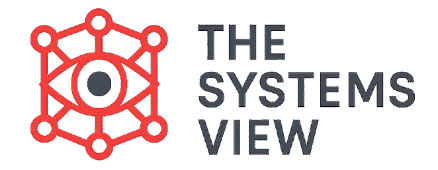We’ve talked about how individuals grow through Personal Mastery, and how we learn to challenge our hidden beliefs with Mental Models. We also saw how a Shared Vision brings everyone together. Now, let’s look at the fourth discipline: Team Learning.
Think about a great sports team. They don’t just have good individual players; they play as one unit. They communicate without words, they know where each other will be, and they perform better together than any one player could alone. This is what Team Learning is about in an organization.
Team Learning is how a group of people works and learns together so well that the team’s intelligence becomes much greater than the smartness of any single person in it. It’s about developing special skills for talking openly, discussing ideas, and building a common understanding. This way, the whole team can discover new insights and solutions that no one person could have found on their own.
What is Team Learning?
Team Learning goes beyond simply working in a team or even individual people learning new things. It means the team itself becomes a learning unit. It’s about:
- Collective Intelligence: The team thinking as one, creating ideas and solutions that are truly new and shared.
- Shared Understanding: Everyone on the team sees and understands problems and goals in a similar way.
- Open Communication: People feel safe to share their real thoughts, questions, and even disagreements.
- New Ways of Thinking: The team discovers new ways to approach challenges, going beyond old habits.
It’s the difference between a group of individuals working side-by-side and a group truly collaborating to solve complex puzzles.
Why is Team Learning Important?
Team Learning is incredibly important for several reasons:
- Solving Complex Problems: Many of today’s problems are too big or too complicated for one person to solve alone. They need the combined brainpower and different views of a team.
- Building Trust: When teams truly learn together, they build deeper trust. People feel heard and valued, which makes them more willing to open up and take risks.
- Improving Communication: Team Learning helps people listen better, ask deeper questions, and express their thoughts more clearly. This reduces misunderstandings.
- Fostering Innovation: New and creative ideas often come from teams that can openly explore different thoughts and build on each other’s ideas.
- Aligning Actions: When a team learns together and agrees on how to move forward, their actions become more aligned and effective.
How to Practice Team Learning
Team Learning is a skill that teams develop over time, focusing on how they talk and interact.
Dialogue
This is a key part of Team Learning. Dialogue means people come together to explore complex issues openly, suspending their own firm beliefs for a moment. The goal is not to win an argument or convince others. Instead, it’s about listening deeply, asking honest questions, and letting meaning “flow” between everyone. It’s about looking for a shared understanding that is new to everyone. Dialogue helps uncover hidden assumptions and allows for truly new insights to emerge.
Discussion
While dialogue is about exploring, discussion is often about making decisions or choosing the best option. In a discussion, people present their different views and argue for them. Both dialogue and discussion are important. Dialogue opens up new possibilities, and discussion helps narrow them down to a decision. For good team learning, teams need to know when to engage in open dialogue and when to shift to focused discussion.
Suspending Assumptions
For a team to truly learn, its members must be willing to put aside their firm beliefs and assumptions, even just for a little while. This means being open to hearing new ideas that might challenge what you thought was true. When you suspend assumptions, you can truly listen to others and see things from a fresh viewpoint.
Important: Team Learning creates a “shared pool of meaning.” This means the team develops a common understanding of problems, strategies, and goals that makes everyone more effective. </blockquote>
Thinking Together
This is about actively building on each other’s thoughts. It’s not just about one person talking and others listening. It’s like a jazz band where musicians listen, react, and create something new together. Teams learn to identify patterns, see how their collective actions create results, and solve problems as one unit.
Role of Healthy Conflict
It might sound strange, but disagreements can actually lead to deeper team learning if handled well. When team members feel safe enough to voice different ideas and challenge each other respectfully, it can uncover hidden issues and lead to better solutions. The key is to turn conflict into a chance for learning, rather than a win-lose battle.
Team Learning and Systems Thinking
Team Learning is deeply connected to Systems Thinking because complex systems require many different views to be understood.
- Multiple Perspectives: Systems thinking often needs people to see a problem from many angles. Team learning, through dialogue, helps bring these different perspectives together, creating a fuller picture of the system.
- Shared Understanding of Systemic Issues: Teams can collectively identify patterns and underlying causes in a system that individuals might miss. They can see how their own actions affect the whole system.
- Collective Action: Once a team understands a system better, they can collectively decide on powerful “leverage points” to make positive changes within that system.
Team Learning in the Learning Organization
The discipline of Team Learning strengthens all the other disciplines:
- It helps individuals practice Personal Mastery by creating a safe space for reflection and feedback.
- It allows for open discussion and challenging of Mental Models, as team members share and test their beliefs together.
- It is crucial for building and achieving a Shared Vision, as the team works together to define and commit to their common future.
Conclusion
Team Learning is a vital discipline for any organization that wants to be truly adaptive and intelligent. It transforms a group of individuals into a powerful, collective learning unit where the combined intelligence is greater than its parts. By focusing on open dialogue, challenging assumptions, and truly thinking together, teams can solve complex problems, build deeper trust, and drive continuous innovation. It’s the engine that helps a learning organization truly become “smarter together.”



